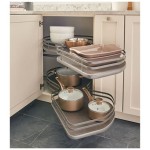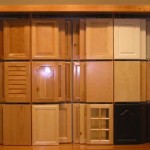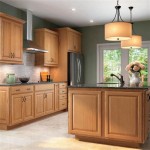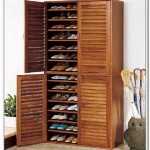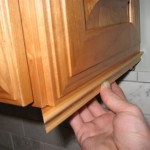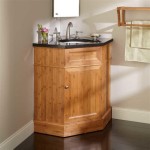How To Remove Doors From Kraftmaid Cabinets
Kraftmaid cabinets are a popular choice for kitchens and bathrooms due to their durability, style, and wide range of design options. Occasionally, the need to remove cabinet doors may arise for various reasons, such as cleaning, painting, hardware upgrades, or repairs. Understanding the proper techniques for removing doors from Kraftmaid cabinets is essential to avoid damage to the cabinets, doors, or surrounding hardware.
The process of removing Kraftmaid cabinet doors is generally straightforward, but it is important to proceed with caution and follow the steps carefully. Different hinge types may necessitate slightly different approaches, so identifying the type of hinge used in the cabinet is a critical first step. This article provides a comprehensive guide to safely and effectively removing doors from Kraftmaid cabinets.
Identifying the Hinge Type
Before attempting to remove any doors, accurately identifying the type of hinge used on the Kraftmaid cabinets is paramount. Kraftmaid utilizes a variety of hinge types, and the removal method will differ depending on the specific hinge. Common hinge types found on Kraftmaid cabinets include:
European Hinges (also known as concealed hinges): These hinges are typically hidden inside the cabinet when the door is closed. They are adjustable and allow for precise alignment of the door. European hinges are characterized by a cup that is mortised into the door and an arm that attaches to the cabinet frame.
Face Frame Hinges: These hinges are mounted directly to the face frame of the cabinet and are visible when the door is closed. They are less common in modern Kraftmaid cabinets but may be present in older installations.
Butt Hinges: These hinges are typically found on older cabinet styles and are mortised into both the door and the cabinet frame. They consist of two leaves joined by a pin.
A careful visual inspection of the hinges will reveal the type used in the specific Kraftmaid cabinets. Understanding the hinge type will allow for a more targeted and effective removal process, minimizing the risk of damage.
Tools and Materials Required
Having the necessary tools and materials readily available will streamline the door removal process and contribute to a successful outcome. The following is a list of common tools that are typically required:
Screwdriver (Phillips Head and Flat Head): A screwdriver with both Phillips head and flat head bits is essential for loosening and removing screws that secure the hinges to the cabinet frame and door.
Drill/Driver (Optional): A drill/driver with appropriate bits can be used to speed up the screw removal process. However, caution is advised, as over-tightening or stripping screws can damage the cabinet or door.
Pencil: A pencil is useful for marking the position of the door on the cabinet frame before removal. This can aid in the reinstallation process and ensure proper alignment.
Painter's Tape: Painter's tape can be used to secure the door in place while screws are being removed. This prevents the door from falling and causing damage.
Small Wooden Block or Wedge: A wooden block or wedge can be used to gently support the door while the hinges are being detached, preventing it from abruptly dropping.
Safety Glasses: Wearing safety glasses is recommended to protect the eyes from any debris or flying screws during the removal process.
With these tools and materials at hand, the door removal process can be carried out efficiently and safely.
Removing Doors with European Hinges
European hinges are the most common type of hinge found on Kraftmaid cabinets. The removal process typically involves the following steps:
Locate the Release Mechanism: European hinges often have a release mechanism that allows the door to be detached from the cabinet frame without completely removing the screws. This mechanism may be a lever, clip, or button located on the hinge arm.
Engage the Release Mechanism: Depending on the hinge design, the release mechanism will need to be engaged to release the door. For lever-type mechanisms, the lever is typically flipped or rotated. For clip-type mechanisms, the clip may need to be pressed or slid. Refer to the manufacturer's instructions or online resources if the specific release mechanism is unclear.
Support the Door: While engaging the release mechanism, support the door with one hand to prevent it from falling. A small wooden block or wedge can be placed under the door for added support.
Detach the Door: Once the release mechanism is engaged, gently pull the door away from the cabinet frame. The door should detach from the hinge arm without resistance. If resistance is encountered, double-check that the release mechanism is fully engaged.
Remove Remaining Screws (If Necessary): If the door does not detach completely after engaging the release mechanism, it may be necessary to loosen or remove the screws that secure the cup to the door. Use a screwdriver to carefully remove these screws, ensuring that the door is adequately supported.
Store the Door and Hardware Safely: Once the door is removed, store it in a safe location where it will not be damaged. Label the door and hardware to ensure proper reassembly. Store screws in a labeled bag to prevent loss or mixing with other hardware.
This method aims to simplify the removal process while minimizing the likelihood of damage. Examining the specifics of the hinge will inform the most effective way to disengage the door.
Removing Doors with Face Frame Hinges
Removing doors with face frame hinges typically involves unscrewing the hinge leaves from both the door and the cabinet frame. Follow these steps:
Support the Door: Use a small wooden block or wedge to support the door while the screws are being removed. This will prevent the door from falling and causing damage.
Loosen the Screws: Use a screwdriver to loosen the screws that secure the hinge leaves to the cabinet frame. Do not remove the screws completely at this stage.
Loosen the Door Screws: Similarly, loosen the screws that secure the hinge leaves to the door. Again, avoid removing the screws entirely.
Remove the Screws: With the screws loosened, carefully remove them from both the cabinet frame and the door. Ensure the door is well-supported while removing the final screws.
Detach the Door: Once all the screws are removed, the door should detach easily from the cabinet frame. If there is any resistance, double-check that all screws have been removed.
Store the Door and Hardware: As with European hinges, store the door and hardware in a safe location. Label the door and hardware to ensure proper reassembly. Keep all parts properly stored until reinstallation.
This method, while straightforward, requires care to prevent stripping screw heads and ensuring adequate door support during the process.
Removing Doors with Butt Hinges
Removing doors with butt hinges requires a slightly different approach, as these hinges are mortised into both the door and the cabinet frame. The process involves removing the hinge pin.
Support the Door: Use a small wooden block or wedge to support the door. This is crucial because once the hinge pin is removed, the door will be completely detached.
Locate the Hinge Pin: The hinge pin is a cylindrical rod that runs through the knuckles of the hinge, connecting the two leaves.
Remove the Hinge Pin: There are several methods for removing the hinge pin. A nail set and hammer can be used to gently tap the pin upwards from the bottom. Alternatively, a thin punch or a small screwdriver can be used to push the pin out. Some butt hinges have removable caps or retainers that must be removed before the pin can be extracted.
Detach the Door: Once the hinge pin is removed, the door will detach from the cabinet frame. Ensure the door is well-supported to prevent it from falling.
Store the Door and Hardware: Store the door, hinge pins, and any other hardware in a safe location, properly labeled for reinstallation. Ensure the hinge pins are kept with the correct door to ensure proper reassembly.
The careful removal of the hinge pin is key to this method. Applying gentle, consistent pressure is preferable to avoid damage to the hinge or the door.
Addressing Common Issues
During the door removal process, several common issues may arise. Understanding how to address these issues can prevent frustration and ensure a successful outcome.
Stripped Screws: Stripped screws can make it difficult to remove the hinges. If a screw is stripped, try using a rubber band or steel wool between the screwdriver and the screw head to provide better grip. A screw extractor can also be used as a last resort.
Stuck Hinges: Hinges may become stuck due to paint buildup or corrosion. Gently tapping the hinge with a hammer can help to loosen it. A penetrating oil can also be applied to help dissolve any buildup.
Misaligned Doors: If the doors are misaligned, it may be necessary to adjust the hinge position. Before removing the door, mark its original position on the cabinet frame. When reinstalling the door, refer to these markings to ensure proper alignment.
Damaged Cabinets or Doors: If the cabinets or doors are damaged during the removal process, assess the extent of the damage and determine the appropriate repair strategy. Minor scratches or dents can often be repaired with wood filler or touch-up paint. More significant damage may require professional repair or replacement.
By anticipating and addressing these common issues, the door removal process can be managed effectively, resulting in a successful outcome and minimal damage to the cabinets or doors.
By following these steps and tips, removing doors from Kraftmaid cabinets can be a relatively simple and straightforward task. Prior planning, careful execution, and attention to detail are critical for success. Always prioritize safety and take precautions to prevent damage to the cabinets, doors, or surrounding hardware.

Removing And Attaching Kraftmaid Cabinet Doors

How To Adjust Kraftmaid Cabinet Door Hinges Purchased Before August 2024

How To Remove And Adjust Kraftmaid Drawers Drawer Fronts

How To Install Kitchen Cabinets And Remove Them Remodel Pt 1 Crafted Work

How To Install Kitchen Cabinets And Remove Them Remodel Pt 1 Crafted Work

Support

Removing And Attaching Kraftmaid Cabinet Doors

How To Install Kitchen Cabinets And Remove Them Remodel Pt 1 Crafted Work

Introducing The Kraftmaid Whisper Touch Hinge With Suremount Installation System

How To Install Kitchen Cabinets And Remove Them Remodel Pt 1 Crafted Work
Related Posts

